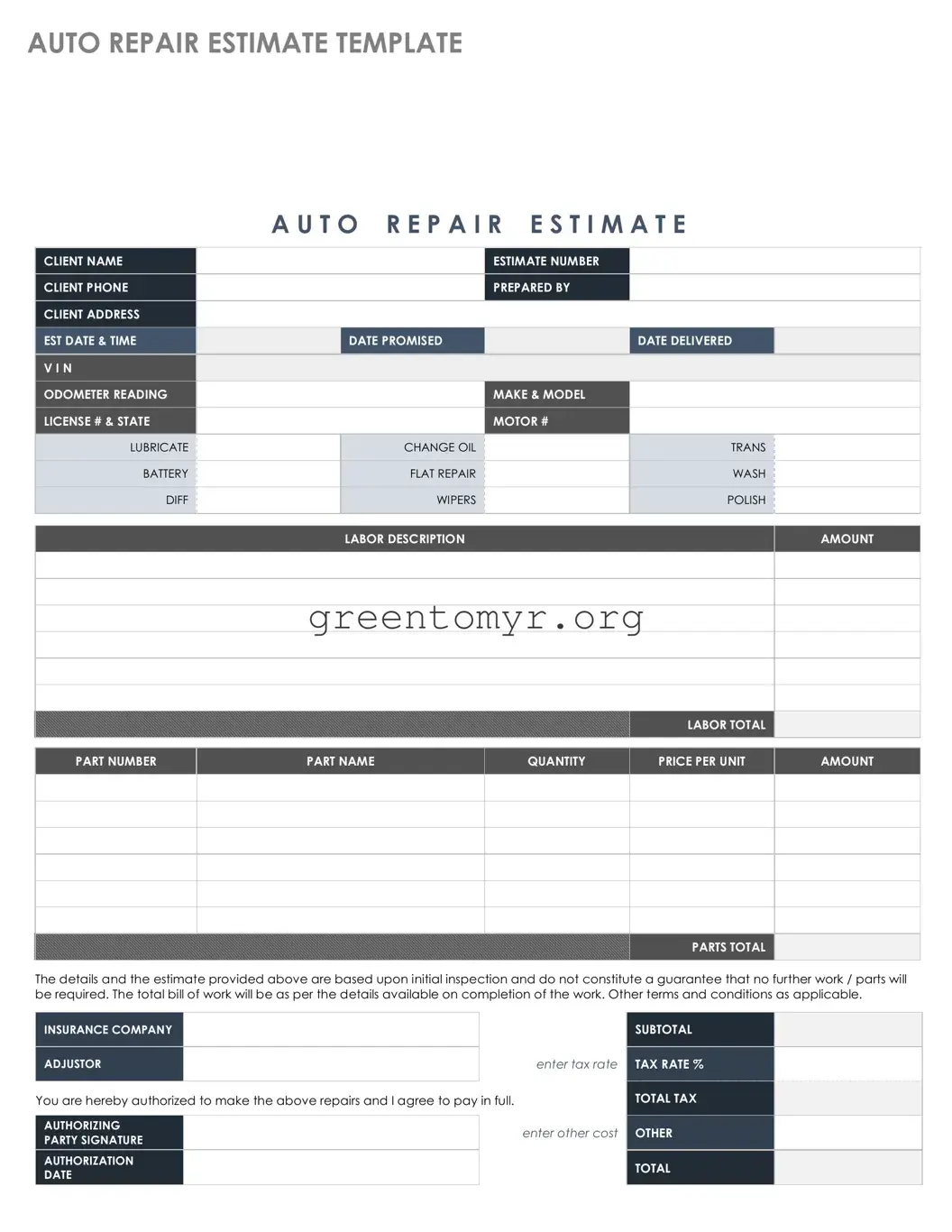The Auto Repair Estimate form serves as a detailed document that outlines the anticipated costs associated with vehicle repairs. It's designed to give car owners a clear understanding of what to expect in terms of repair expenses before any work begins. This helps in planning and budgeting effectively for necessary auto repairs.
To fill out the Auto Repair Estimate form, follow these general steps:
-
Gather information about your vehicle, including the make, model, year, and VIN.
-
Provide a detailed description of the issue your vehicle is experiencing.
-
List any specific services or repairs you believe may be necessary.
-
Include your contact information so the repair shop can reach you with any questions or clarifications.
Completing the form accurately will help mechanics assess the situation more efficiently.
Why is it important to get an estimate before repairs?
Obtaining an estimate before repairs is crucial for several reasons. First, it allows you to know the expected costs, helping you avoid surprises at the end of the repair process. Second, it gives you the opportunity to compare estimates from different shops to ensure you are getting a fair price. Lastly, it creates a written record of what repairs will be performed and how much they will cost, which is helpful for both parties if any disputes arise later.
Can I trust the estimates provided by repair shops?
While most reputable repair shops provide honest estimates, it's always wise to do some research. Here are some tips to help you assess the trustworthiness of an estimate:
-
Check reviews and ratings online for the repair shop.
-
Ask friends or family for recommendations.
-
Request multiple estimates from different shops to compare prices and services.
Being informed and proactive can help you feel more confident in your choices.
What factors can affect the accuracy of an estimate?
Several factors might influence the accuracy of an auto repair estimate. These include:
-
The complexity of the repair or service needed.
-
Access to the necessary parts and materials.
-
The diagnostic process, which may uncover additional issues once work begins.
It's important to keep in mind that estimates are based on visible issues and suggested solutions but may vary if unexpected repairs are discovered during the process.
What should I do if the final bill is higher than the estimate?
If the final bill exceeds the initial estimate, it’s essential to communicate with the repair shop. Start by reviewing the estimate and the final invoice to understand the discrepancies. Ask the repair shop to explain the reasons for the increase. If additional repairs were necessary, a trustworthy shop should be able to provide documentation and details. Many shops value customer satisfaction and may be willing to negotiate or offer insights into the higher cost.
Is there a fee associated with getting an estimate?
Many shops offer free estimates, but some may charge a small fee for the diagnostic process, especially if extensive testing or labor is required. Make sure to ask whether there is a cost involved when you request an estimate. If there is a fee, weigh it against the potential benefits of having an accurate understanding of the needed repairs.

